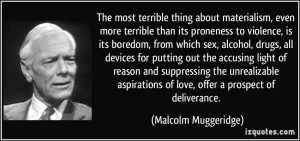When first analyzing Marovich’s article, I found her introduction to the idea of “cuteness” to be interesting, but oddly vague. But there was one aspect of it that stuck out rather clearly: the beckoning cat, and its “magical” properties to draw people in and create good fortune. But what was this magic? How do I find its origin? To help in my comprehension of the topic, I began by doing a Google image search of just the word “cute” to see if I could find any patterns. Lo-and-behold, there was in fact a pattern, things that I have observed my entire life, yet never managed to connect the dots to: puppies at play, kittens in tea cups, babies looking perfectly innocent with wide eyed stares, but it obviously has to go deeper than that; There’s got to be more to this that I’m missing.
Because I found Marovich’s article to be rather surface level, I instead chose to take a look into her sources, which revealed a great deal of factual information that explains our powerful relationships with all things categorized as “cute”. Hiroshi Nittono’s article “The Power of Kawaii” summed up the phenomenon as so: “Cute objects are assumed to be characterized by baby schema. This is a set of features that are commonly seen in young animals: a large head relative to the body size, a high and protruding forehead, large eyes, and so forth.” He goes on to indicate that this baby schema creates a stimulus, which triggers many of our brain’s receptors, particularly those associated with attentiveness, motivation and care giving. The high level of rewarding stimuli we receive just from the observation of these objects is a compelling explanation of our “obsession” with them.
To drive this point home further, Cara Santa Maria of the Huffington post breaks down the origins of this “power”. Evolutionary developments, pertaining to both human beings and other living creatures, are arguably the sole reason why “cute” properties are so valued our minds. As stated previously, we find certain animals (particularly young ones) to be cute because their physical characteristics stimulate our brains in the same way that human babies do. But why do we find these particular features so attractive? One likely answer may be that over time, a mutation in the genes of mothers predisposed them to be more protective and nurturing of the offspring that possessed what we now refer to as “cute” features. As a result, these children (who also were likely to possess the same genetic bias themselves) were much more likely to survive and reproduce, which over millions of years, slowly adapted our inherent reaction towards animals and objects with the same aesthetics. For example, a young, docile appearance can explain why we bred and domesticated certain types of animals, as opposed to others. Additionally, these patterns explain why we describe these qualities magnetic and “magical”. In all actuality, the talismanic properties of the beckoning cat are merely a façade: they lure us in because we are genetically predisposed to see them as such, and the “good fortune” they bring stems from the fact that their appearance naturally causes us to feel more motivated and rewarded.
So we have an understanding of the science of cuteness, but this still leaves the question of why exactly do humans often treat these living, breathing creatures with the same level of possession and personal association that they would any other object? To find the answer, I returned to Belk’s essay “Possessions & the extended self”. Perhaps, most obviously, there is the notion that we see these creatures as objects because a person may see himself or herself as the amalgamation of everything they have or possess. Spouses, Children, Slaves are all examples of ways in which man has found a sense of possession towards those in his own species, so it seems only natural that similar attitudes be held over other living creatures. This becomes more elaborate as Belk suggests that we see our pets at extensions of ourselves, both in terms of personality and viewing treatment of a pet as a reflection of the opinion of the self. As the creation of “cute” objects became more and more apparent, it would seem only natural that they would be crafted to allow us to input ourselves into them as well. This can explain why some of the most famous faces in popular culture (Hello Kitty, Pikachu, Snoopy, etc.) are all examples of characters in that possess cute qualities, but yet are seemingly voiceless. This internal vacancy allows us to project ourselves into the character, adding in yet another layer to the complex science of cuteness.
Sources:
https://docs.google.com/file/d/0B08Ob_Ps6u4JenFIb043SllEYXM/edit
http://www.theatlantic.com/technology/archive/2014/05/the-beckoning-cat/362108/2/
http://www.huffingtonpost.com/2012/11/26/science-of-cute_n_2171987.html
http://www.plosone.org/article/info%3Adoi%2F10.1371%2Fjournal.pone.0046362

